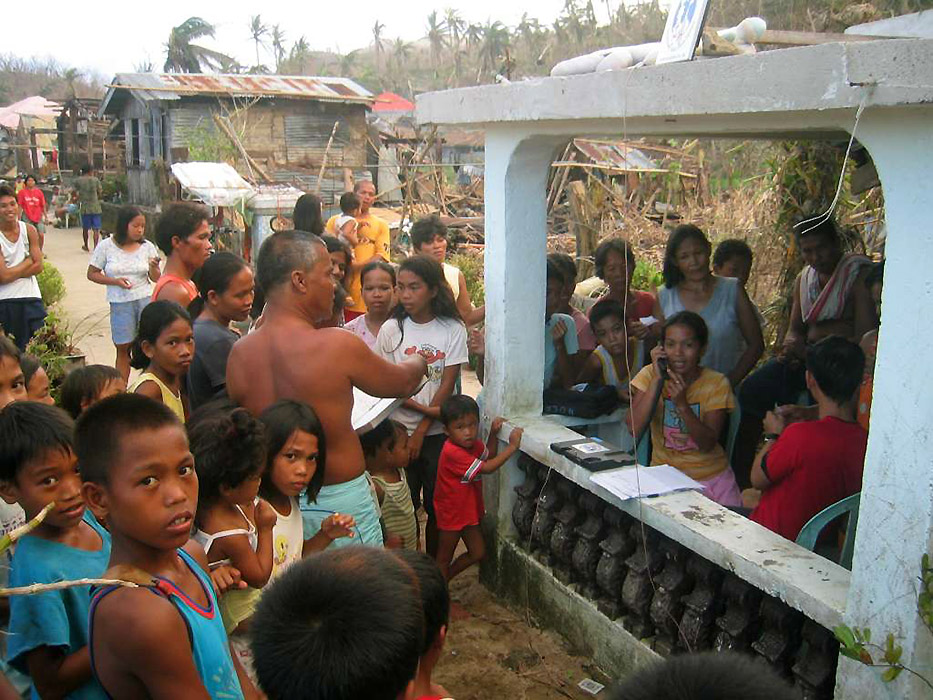Typhoon Durian
Context: Typhoon
Start date: 04/12/2006
End date: 19/12/2006
Areas of intervention: Catanduanes
Activities :
- Telecoms centres
- Humanitarian calling operations
13 NGOs connected
833 calls offered
40 hours of communication
Context
Durian, the 20th storm to hit the Philippines during 2006, affected 62 of the 79 provinces of the archipelago and killed more than 1 400 people and affected 1.5 million. Durian’s winds and torrential rains seriously damaged telecommunications infrastructure, particularly on the island of Catanduanes, situated in eastern Philippines.
In Albay, the region was affected by a huge mudflow following Durian, none the less the GSM network was rapidly re-established. However, in Catanduanes, fixed and mobile phone networks were destroyed and 146 405 people (70% of the total population) have been affected. Durian became the most devastating typhoon in Catanduanes in 10 years. President Arroyo declared the state of calamity on 3rd December and requested International assistance.
Deployment
Télécoms Sans Frontières immediately mobilized to strengthen rescue teams and offer communications to survivors. In coordination with the National Disaster Coordinating Council (NDCC), TSF deployed a team from its regional base in Bangkok on the 4th December. Two days later, the team left Manila with a military aircraft and reached Virac in Catanduanes. TSF action focused on the island as it was the most damaged region in terms of telecommunication infrastructure.
Telecoms centres
Upon request from the NDCC, TSF deployed a telecom centre at the coordinating centre of Virac, the capital of the province of Catanduanes. 13 local and international organizations (notably World Vision, Operation Blessing and the Red Cross) benefited from TSF’s broadband Internet connections, phone and fax lines.
TSF’s Telecom Centres facilitated the flow of information from the field, enabled the transmission of the initial assessments to better respond to the needs of affected populations. It also enabled local authorities to follow in real time the path of Typhoon Utor which hit the Philippines on December 9 and 10.
Humanitarian calling operations
In parallel, TSF oragnised humanitarian calling operations for survivors. 833 families (more than 3 500 people) were put in contact with loved ones to give news on the situation or ask for help - notably for money – for the first time after the typhoon. 30% of calls went abroad (US, Emirates, Taiwan, UK, Kuwait, Australia, Angola, Canada, Hong Kong, Germany, Denmark...).
The fact that Catanduanes is an island increases the isolation. On the first day of its publication, the catanduanes website, has been visited 20000 times, proving the necessity of familiars abroad to get information about their homeland.
On 17th December, GSM networks were re-established in Catanduanes and a radio system enabling communication with Manila for relief organizations was set up putting an end to the emergency phase of TSF’s mission.

















